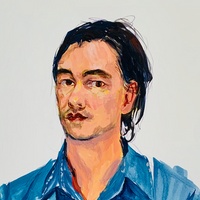On creating immersive work
Prelude
Julia Sinelnikova is an interdisciplinary artist who works with holograms, performance, and digital culture. Encompassing immersive installations, interactive code, projection mapping, and intricately handmade sculptures, her work channels Eastern European folklore and cyber futurism.
Conversation
On creating immersive work
Visual artist Julia Sinelnikova goes deep on the development of her expansive creative practice, the value of travel and collaboration, and what it means to make work that connects us to some of our most primal, expressive instincts.
As told to Samantha Katz, 2591 words.
Tags: Art, Process, Inspiration, Beginnings, Collaboration.
You create holograms, host performances, dabble in digital culture, and construct costumes. Tell me about your broader body of work and general mission as a contemporary artist living and working in New York City.
I am primarily a sculptor and make immersive installations. My goal is to immerse audiences in new worlds, so they can slip into a meditative state and interact with each other on a more tactile level—with the light bouncing everywhere, dismantling walls, and destroying rectangular lines. When I go into a space with an installation or build an outdoor public sculpture, I’m usually using a lot of organic forms and symbols from different spiritual traditions, integrating it through my work.
I have seen many bodies of your work, and various performances. Some of the more popular names that come to mind are “The Fairy Organs” and “Reveals + Sprites.” What are those? And can you tell me more about “The Oracle”?
I have been working on “The Fairy Organs” since 2012, right around when I finished my undergraduate degree in sculpture. The first one came to me in a flash, which is a common pattern in my practice. I could see the way it would look, and the mythology of it. I started to make the first few Fairy Organs by hand, cutting the mylar to build them. They’re all very detailed hand-cut patterns. I was thinking about the way we communicate in bits and texts, translating this fractured form into a meditative practice.
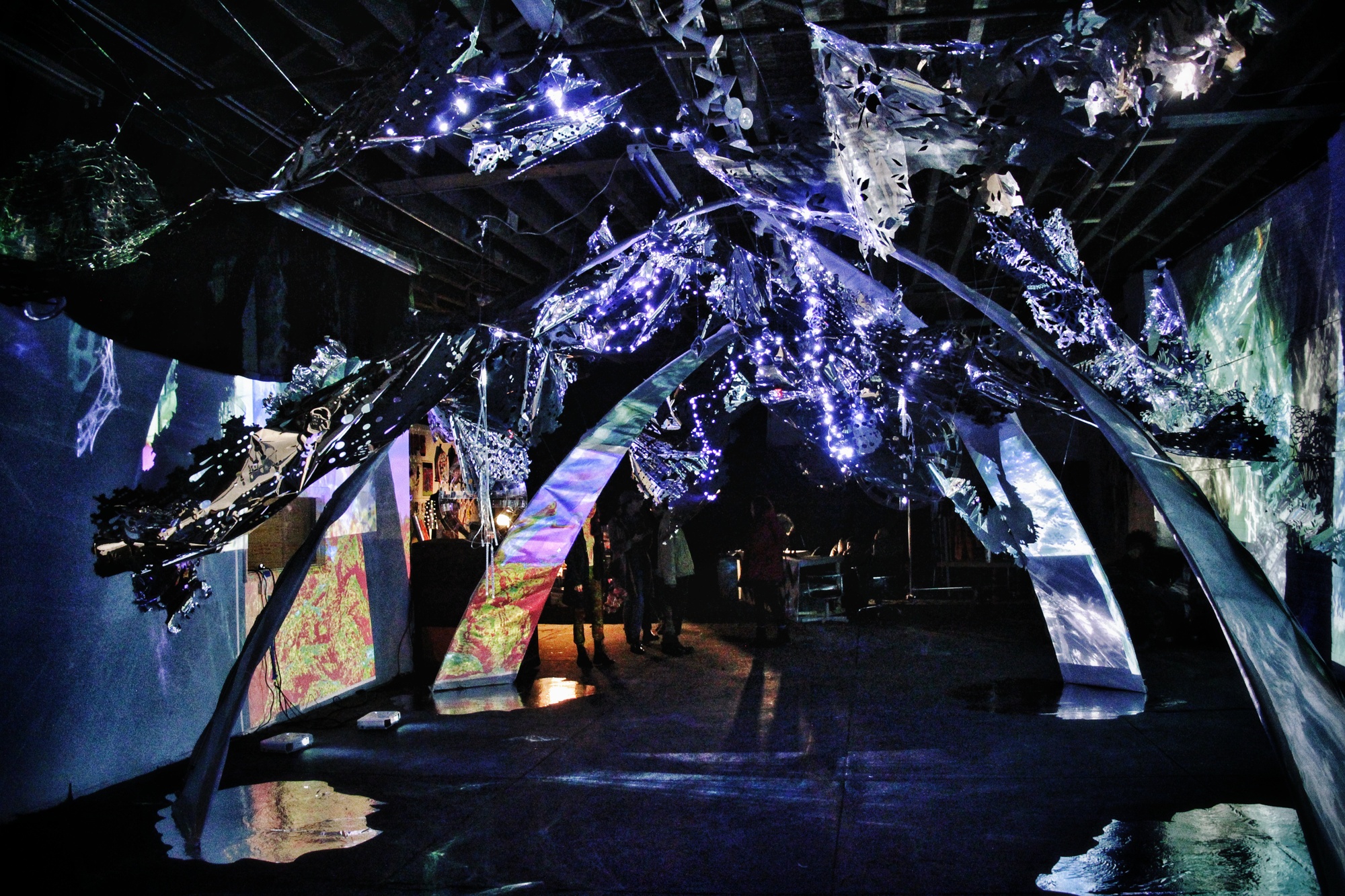
Rootkit at Superchief, NYC by Syra Sparkle
The concept for these was inspired by growing up with Eastern folklore, which is very heavy on symbolism and witches, and the fairies in cultures outside of the West are seen as more “mischievous.” So, in the east, fairies are known to give and take away. This is the kind of mythology I am interested in. Regarding the organs, I’m really interested in how we can change our bodies online into anything we want today, in this exponential way. In comparison to all of history, even in the last 20 years, we’re making unprecedented strides in that department.
“The Oracle” is one of my performative alter-egos; I see myself as a mother sorceress giving birth to these living organs. I view them as living entities. To complete the work I do a movement performance piece and video with the sculptures. I often put the organs out in nature. So they’re really “alive” and they need to be interacted with to activate their light patterns.
In my ideal exhibition there would be many large rooms, and a lot of lighting that would illuminate the crystals and shadows of the work. I’m interested in using all the materials that my hands touch—creating something weightless with it.
I also create artworks for a wall-hanging format, and that series is entitled “Reveals & Sprites.” The square on the wall is a universal way of conveying the idea of “art” to a wide audience, and I want to communicate with a wide variety of people. Even though, for me, it’s natural to work in totally immersive, large-scale, and organic configurations.
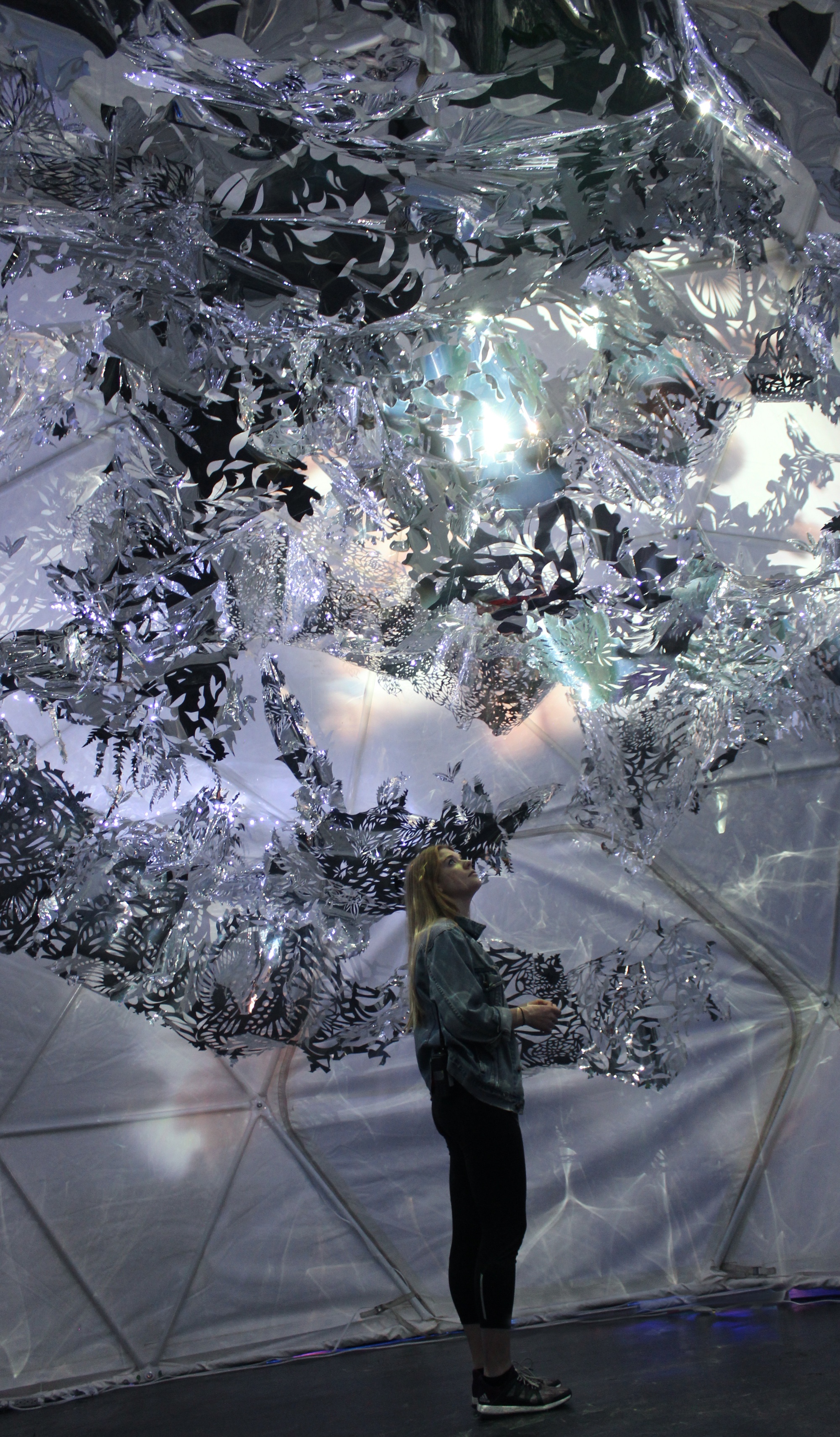
Pure Leaves Installation for 29 Rooms, San Francisco. 2018
You also do big set designs and sculptural installations for people like Lee Burridge, Juliana Huxtable, and Aurora Halal. How did these engagements happen? For other emerging artists, what does it take to get the attention of big-name buyers or collaborators?
I’m really grateful to have been able to work with some of these major artists. Even though the medium varies, I think we’re all working on the same level and in the same language. I am always seeking out the best thing to do with my work. So, when I got out of school I was in New York City and thought, “Okay, I need to show my work. I have to share my new ideas.” To really flex my designs, I need large-scale spaces—ideally where a lot of people can go and interact with the work.
Just going up to people who you think you might like and talking to them is the best way to network. It’s how I organize shows. And we all eventually collaborate. The New York art scene is stronger than ever, in this way, despite what anyone might say. People are always saying “New York is over” but it’s strong-willed people with the most elaborate artistic repertoires who are here. And while we all tour the world, artists come together in NYC. Everyone knows each other, and that network takes a lot of awareness to cultivate. It took me about five years to gain traction once I moved here.
From Joshua Tree to Miami, LA to Brooklyn, a number of institutions and galleries have showcased your work. What are the benefits to exhibiting in a wide variety of cities and events across the country?
For me, it’s always felt so natural to travel to other places and to discover what is going on in the world. My mom, who is a first-generation immigrant, would always save any extra money we had for travel when I was a kid. She invested in opportunities for me to see Europe and the United States, so I was able to explore a lot of art museums and institutions.
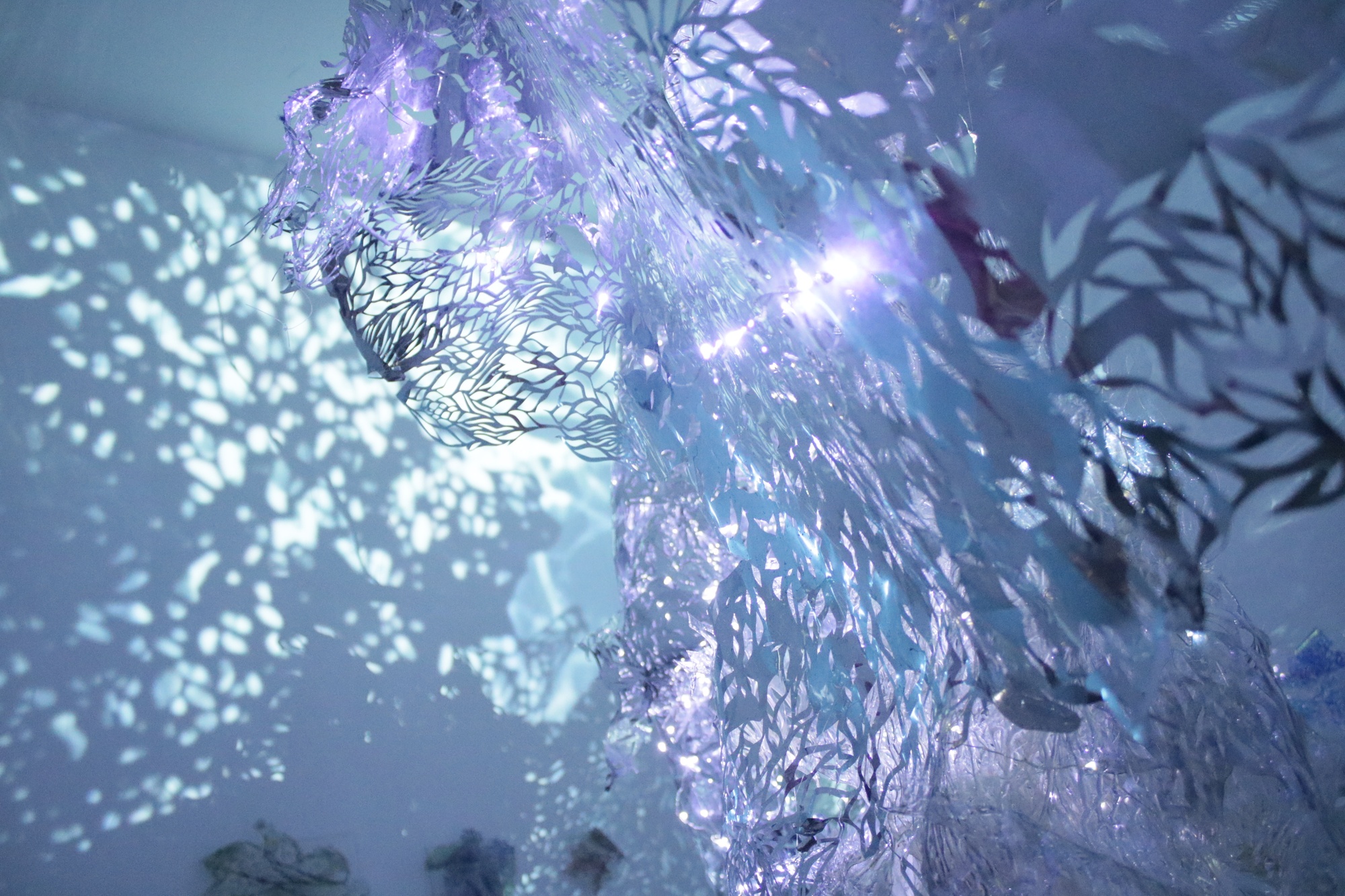
Ice Pores, 2018. photo by Josef Pinlac
If you stay in your community year-round, you get stuck in a particular mindset. For me, it’s important to interact and have dialog with artists that have completely different ideas about the economy, collaboration, and ways of presenting work.
Some mediums don’t work in certain environments in general. My work, for instance, sometimes does not have a big enough venue in New York City. When you meet someone while traveling, important partnerships and exchanges can take place. You can invite that person to come to NYC and do a show with you in their city, or visa-versa. You could join forces to pitch shows and build immersive sets, which I have done with DJs, musicians, and other visual artists. Helping each other in this way is important, in an otherwise competitive market. I don’t know what I would do without my travel network.
It’s no secret that choosing the right MFA program requires a lot of thought and planning. This is a huge commitment and the process is a challenging one. As a working artist who is already progressing in her career, what do you feel are the benefits of pursuing an MFA? Is this necessary for success?
I thought about getting an MFA many times. I also know working artists who say that you should never get one. Everyone has a strong opinion about it. I actually believe people should be more open-minded—there are reactions like “it’s so unnecessary” and “look at all the debt people are in, perhaps it’s not worth your money.” It’s a personal decision to have an intellectual slant on how you analyze and produce your work, and the desire to build a community with like-minded people. I think that any artist who chooses to get an MFA should formulate their own opinion and go for it. It’s such a personal decision and others should be supportive of that. I would also really love to see more funding for people with less privilege, because it’s very limited and it creates a super elitist class within culture and the world.
Have you found that weaving other performers and artists into your work—as you have done with projects like The Vector Gallery and Superchief Gallery—is a necessary vehicle for your creative expression?
Yes. I grew up performing. I was in a touring choir from the ages of 10 to 14. I did theater and after-school programs. I also tried a few instruments, but found that experience to be a very discouraging one. It’s an easy industry to become disappointed within. I did performance for a few years in New York, but I realized that visual art is my passion. After a few years here I decided to reserve all of my energy for that, because I was in such a competitive situation before that just being here felt like being on fire. It was then that I realized, “Okay, I need to turn my studio into a functioning business ASAP.”
When I met JJ Brine—a performance artist who founded Vector Gallery—it inspired me to develop my own performances again, this time within my “Fairy Organ” and “Crystal Fragments” environments. For my solo exhibition “ROOTKIT” at Superchief Gallery last year, I did a performance with three other Vector Gallery associated artists: JJ Brine, Cornelia Singer, and Montgomery Harris. The show was partially a set meant to represent the Black Sun Night Club from this cyberpunk book called Snow Crash. For the performance that we did, we rehearsed for a month and acted out the central scene within the book, when a virus infects the user. It was a great experience.
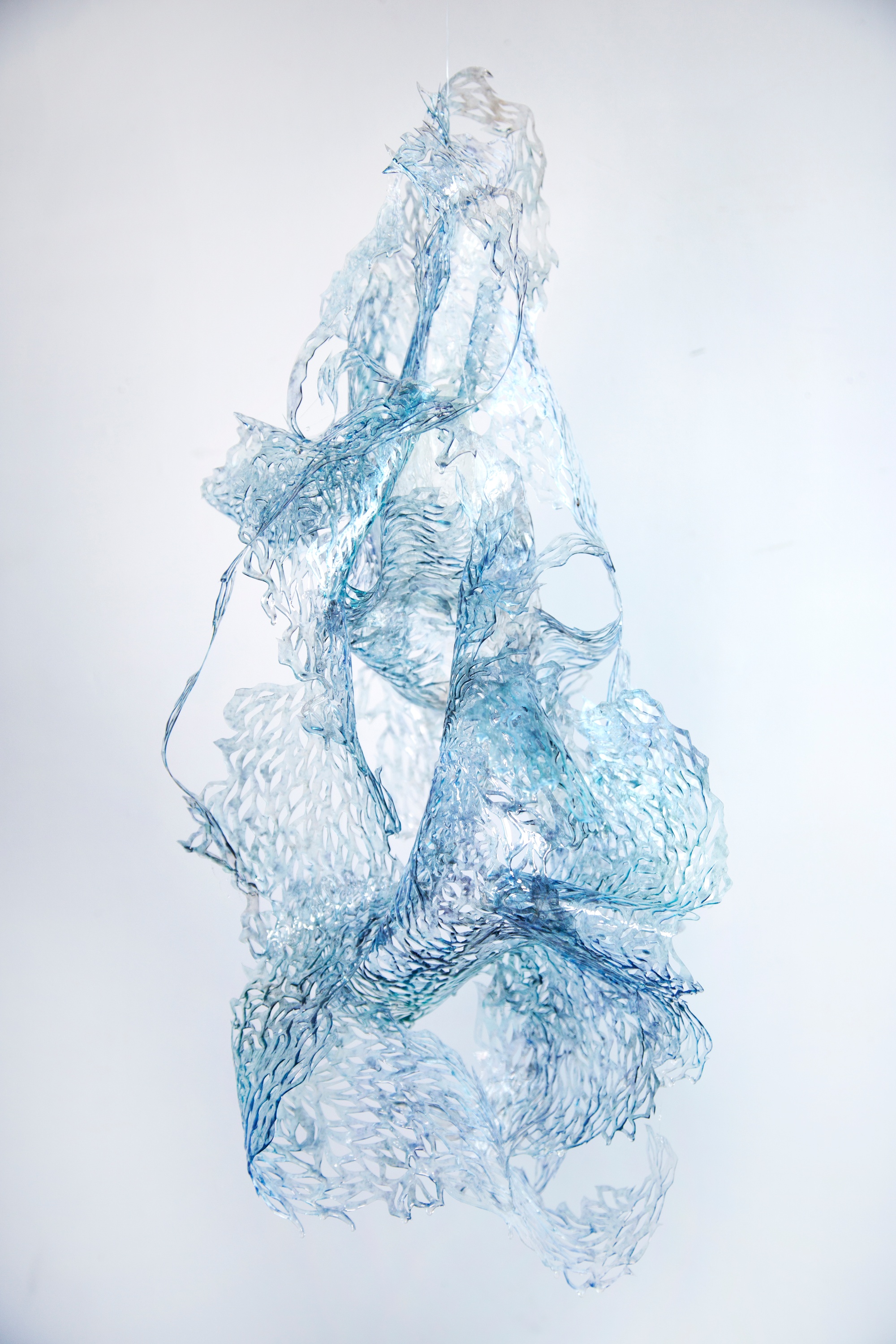
Chlorophycaea, courtesy of artist
Brooklyn has a huge and diverse selection of artists—both established and emerging. How do you choose who to work with?
Even though I spend 12 hours a day in my studio quite often, I’m part of a diverse community of New York creators. The specific type of person I’m talking about are the artists and leaders who are grinding away in their studios or traveling and living a similar lifestyle to me. They spend time refining their product and are more interested in that than immediate commercial success or social media fame, though I think we’re all interested in that to some extent.
The people who I connect with here in NYC, in a long-term capacity, have the same values. For example, a couple of years ago I testified alongside many local artists at City Hall to talk about repealing the Cabaret Law. And it worked! After a bunch of articles came out about the topic and our collective efforts to combat it, the city changed position and the law was repealed. People in NYC will come together through important initiatives or conversations like that.
Some of your work explores topics of surreal worlds, cyberwarfare, and surveillance. Does all of your work survey such ambitious topics?
I’m interested in spirituality and cyber-futurism. I think that stems, somewhat, from the Russian folktales I grew up with. I had a computer when I was five years old. I’ve always been fascinated by dystopian fiction, and it’s hard for me to read anything else. I feel like you receive more education from reading fiction because it’s an opportunity to get inside other people’s heads. That has been a primary inspiration for my work. And it can take any form; lately I’ve been making videos and music, as well as fabrication and small physical works. The work can take any form. It feels like I’m building my own world in this way. My own language, even.
I am also inspired by fractal and modular forms in nature, so it’s really important for me to get down-time in natural environments, where I can photograph and make videos of light patterns, fungal growths, plants, etc. I use the patterns I find to create my cut patterns, and by incorporating these into my sculptures, I am seeking out the universal language of nature.
I’m also interested in surveillance. I think it’s the most important issue for artists and creators living today—writers, filmmakers, anyone who uses independent thought in their daily life. A lot of what these cyber-futurist books show us is how surveillance can circumvent independent thought. It breaks up our communication as artists and our ability to have solidarity. That’s why I examine this theme in an ongoing body of work I started in 2016, entitled “Surveillance Video Experiments.”
This summer I will be exhibiting it on Governors Island, with the help of Harvestworks, through which I was able to further develop the Max code for it. These video sculptures incorporate unlocked Webcam feeds from the internet alongside real-time selfie footage of the audience, juxtaposing the joy of selfie interaction with feeds of people who do not know they are part of the artwork.
This is my tiny contribution. I hope that I can make art for 100 more years. And we need to talk about surveillance now, since it’s continuously growing.
As an artist who investigates many messages and themes, how do you determine what to focus on, and what environment or audience will best receive the work?
Each project is very specific unto itself. The indoor gallery projects or outdoor commissions are completely dependent on who the receiving community or audience is. The light conditions make a difference, of course. All of these factors are taken into account.
When I have a site picked out where my work will be installed, I look at it and I feel the analytical side of my brain itching. It’s as though a visual map appears, and I see what the volume or form ought to be, and which shape would best accommodate the room’s space. I want to create a feeling as though there is a gravitational change to the space. At first I sketch out approximately 20 ideas before landing on a plan.
To best reach my audience, I usually display my immersive sculptures in indoor spaces, as this work is heavily reliant on computers and projectors. I also create permanent outdoor sculptures out of steel, acrylic, and wood, including my commission for the NYC Parks Department in 2017 entitled “Triquetra for Healing.”
Specifically, your work with hand-cut mylar, light, and sound is intended to convey a fictional universe or metaverse. As technology advances and new styles and mediums evolve, what do you think the future of art or “futuristic art” will look like?
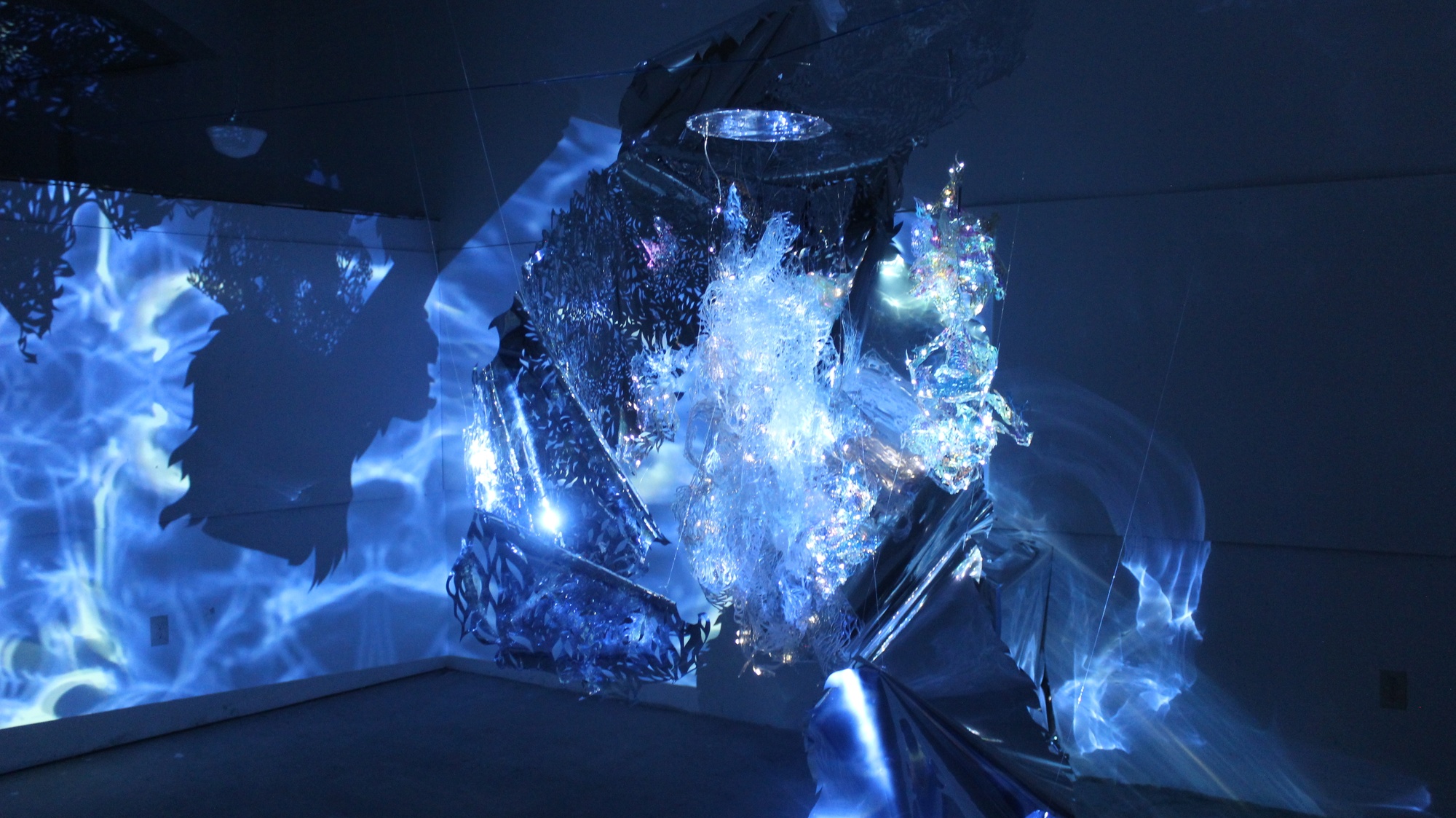
Angel Seed Nest, 2018. Commissioned by Tides Institute.
I feel like that future is now. VR is getting bigger and bigger, and it’s ultimately going to take over. It’s going to become mainstream. It already is taking over in a lot of ways. I’m not super-proficient in it, so I’m learning more. My hope is that tactile, immersive, meditative work—which is real and physical—will have a place in this world, as we start to realize how the constant use of the internet is such a flat experience. To organize our lives on the screen is actually sacrificing part of our brains. I hope that there’s some movement to preserve the traditional art studio practice. It’s just so inherent to human beings to work with our hands, going all the way back to cave painting.
Most people, at some time in their lives, go back to some sort of hand practice, whether that’s relating to art, building, or cooking. I think that it’s just such an important part of our humanity. I believe we should be preserving the studio practice and physical work. Let’s move away from art presented on flat screens and photographs. Immersive work is the future.
Julia Sinelnikova recommends:
-
Art
-
Design
-
Sculpture
-
Collaboration
-
Exhibition Space
-
Futurism
- Name
- Julia Sinelnikova
- Vocation
- Visual artist
Some Things
Pagination

